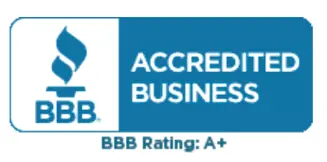-
VITAMIN B COMPLEX (VAHY tuh min B kom pleks) is a multivitamin nutritional supplement that contains B vitamins. The B vitamins are also found in many of foods, such as cereal grains, meat, poultry, eggs, fish, milk, legumes, and fresh vegetables.
This medicine may be used for other purposes; ask your health care provider or pharmacist if you have questions.
-
Take this medicine by mouth. You can take it with or without food. If it upsets your stomach, take it with food. Take it as directed on the label. Do not take it more often than directed.
Contact your health care provider about the use of this medicine in children. Special care may be needed.
Overdosage: If you think you have taken too much of this medicine contact a poison control center or emergency room at once.
NOTE: This medicine is only for you. Do not share this medicine with others.
-
Interactions are not expected.
This list may not describe all possible interactions. Give your health care provider a list of all the medicines, herbs, non-prescription drugs, or dietary supplements you use. Also tell them if you smoke, drink alcohol, or use illegal drugs. Some items may interact with your medicine.
-
See your health care professional for regular checks on your progress. Remember that vitamin and mineral supplements do not replace the need for good nutrition from a balanced diet.
Stools commonly change color when vitamins and minerals are taken. Notify your health care professional if this change is alarming or accompanied by other symptoms, like abdominal pain.
-
If you miss a dose, take it as soon as you can. If it is almost time for you next dose, take only that dose. Do not take double or extra doses.
-
Side effects that you should report to your doctor or health care professional as soon as possible:
-allergic reactions like skin rash, itching or hives, swelling of the face, lips, or tongue
Side effects that usually do not require medical attention (report these to your doctor or health care professional if they continue or are bothersome):
-bright yellow urine
-flushing
-stomach upset
This list may not describe all possible side effects. Call your doctor for medical advice about side effects. You may report side effects to FDA at 1-800-FDA-1088.
-
Keep out of the reach of children and pets.
See product label for storage information. Each product may have different instructions. Get rid of any unused medicine after the expiration date.
To get rid of medicines that are no longer needed or have expired:
-Take the medicine to a medicine take-back program. Check with your pharmacy or law enforcement to find a location.
-If you cannot return the medicine, check the label t osee if the medicine should be thrown out in the garbage or flushed down the toilet. If you are not sure, ask your health care provider. If it is safe to put in the trash, pur the medicine out of the container. Mix the medicine with cat litter, dirt, coffee grounds, or other unwanted substance. Seal the mixture in a bag or container. Put it in the trash.
NOTE: This sheet is a summary. It may not cover all possible information. If you have questions about this medicine, talk to your doctor, pharmacist, or health care provider.
DISCLAIMER: This drug information content is provided for informational purposes only and is not intended to be a substitute for professional medical advice, diagnosis, or treatment. Patients should always consult their physician with any questions regarding a medical condition and to obtain medical advice and treatment. Drug information is sourced from GSDD (Gold Standard Drug Database ) provided by Elsevier.
 En Español
En Español

